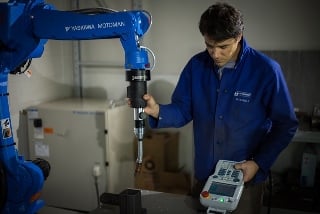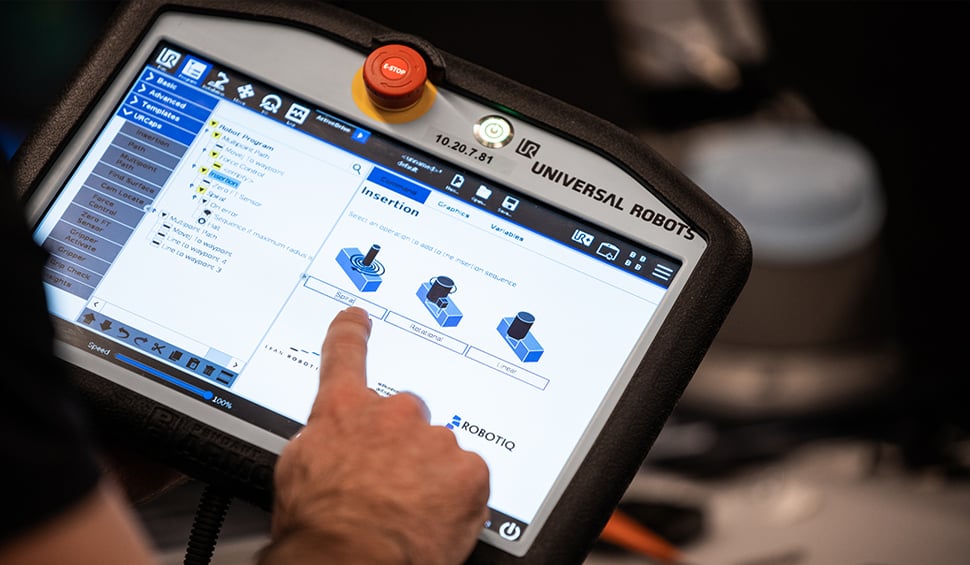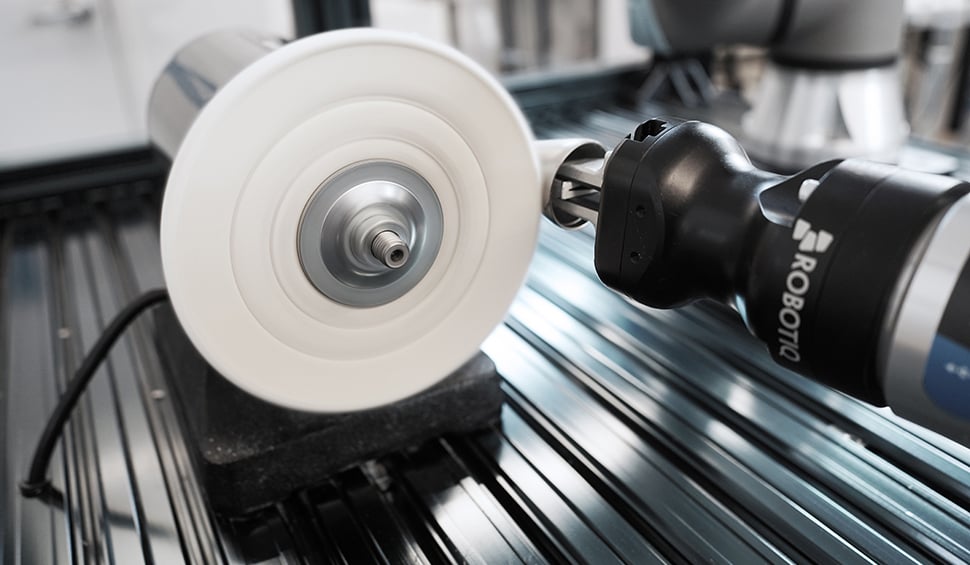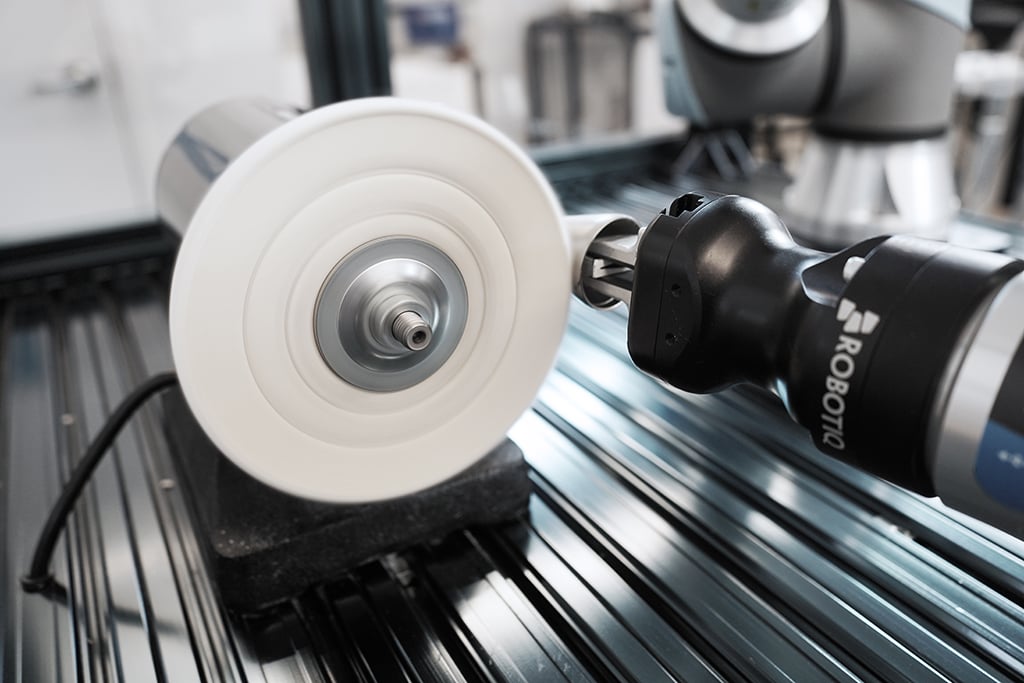Robot Force Torque Sensor - An Introduction

Posted on Sep 05, 2014 in Robot Sensors
3 min read time
Robots are frequently used because of their rigidity. Most applications need rigidity to accomplish the precision necessary in the application. However, having a rigid robot that can not adapt its motions if a disturbance or an unplanned situation occurs is a set up for problems. For example, if a shaft needs to be inserted into a hole by a robot, the parts can be damaged due to a misalignement of the robot or the part. The robot is not sensitive, it doesn't know if the shaft is entering in the hole the way it is suppose to. As robots are programmed to execute given motions at a given speed, there is no way to acquire feedback on the motion itself. Companies need to find a way to give a sense of feeling to the robot. The same kind of feeling that a worker would feel. If the shaft is misaligned, the worker will feel resistance, because he needs to apply more force on the shaft and will automatically adjust his/her movements.
This is why force-torque sensors are necessary in the robotic industry. In fact, as more assembly lines use robots for complex assembly, such as aerospace and electronic devices, the robot will need to feel if somethings goes wrong.
What does ''Force-Torque'' stand for?
A force torque sensor detects the different forces that are applied on the robot wrist or tool in the 3 geometric axes (X-Y-Z). The sensor also detects the torque applied around the 3 different axes. Which basically means that the sensor feels what is going on in all axes. By doing so, the sensor gives feedback to the robot and can adapt its motion to feel the minimum of force that is applied to it. Once the sensor is feeling an acceptable amount of force torque, the robot can continue its motion without risk. Notice that some sensors can measure force on a specific axis for a specific application. Most force torque sensors are installed at the robot flange or wrist to measure the effort between the tool and the environment.
Typical specifications for force torque sensors are the number of measured axes, physical dimensions, force range and communication rate.
Typical Applications
Various tasks can be done with the help of a force torque sensor. Some examples are below.
1. Grinding/Polishing
 Grinding and polishing need to be done with a lot of precision and even with classic methods it is hard to obtain a repeatable result. By using a force torque sensor, the robot can execute a smooth motion with a force threshold, so it doesn't grind too hard on a particular portion of the part. The final result is nice and neat, and all the parts look exactly the same.
Grinding and polishing need to be done with a lot of precision and even with classic methods it is hard to obtain a repeatable result. By using a force torque sensor, the robot can execute a smooth motion with a force threshold, so it doesn't grind too hard on a particular portion of the part. The final result is nice and neat, and all the parts look exactly the same.
2. Assembly
Another branch of applications would be quality control or product testing, in fact some industries need to measure or do a certain motion on a product with a constant and regular force, a force torque sensor would work well for this kind of application. If the part doesn't fit well or where it should go, the robot has feedback and can readjust its motion to put the part in the right position.
3. Collaborative Applications
 Some industrial robotic applications need a collaborative feature. In fact, using an industrial robot in collaborative mode can have a lot of advantages. In collaborative mode you can save programming time or redesign a robot path in a few minutes. Technology such as Kinetiq Teaching use a force torque sensor to teach the robot how to do collaborative welding. This technology saves significant time for the shop and a welding path can be designed in a few minutes without deep programming knowledge.
Some industrial robotic applications need a collaborative feature. In fact, using an industrial robot in collaborative mode can have a lot of advantages. In collaborative mode you can save programming time or redesign a robot path in a few minutes. Technology such as Kinetiq Teaching use a force torque sensor to teach the robot how to do collaborative welding. This technology saves significant time for the shop and a welding path can be designed in a few minutes without deep programming knowledge.
Many applications uses force torque sensors, we can think about haptic technology or teleoperation that both use force limiting operations to give the sense of touch to the human operator through a mechanical interface or vice versa. Force torque sensors are probably the next big advance in the robotic industry. So, make sure to investigate this subject and think about how using this technology for your applications could improve your quality control by making your applications more accurate and precise...and with less scrap.






Leave a comment